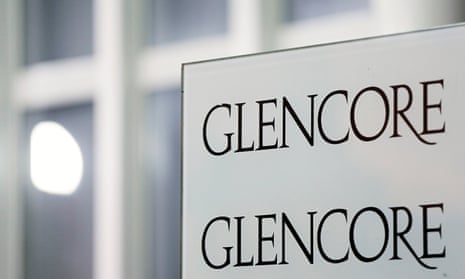Shares in Rio Tinto raced ahead more than 5% in London on Tuesday after the miner rejected a merger approach from smaller rival Glencore.
A tie-up between the two would create the world’s biggest mining group, ahead of BHP Billiton, and valued at £100bn.
Rio shares jumped 5.5% to £31.57 in early trading, adding £3.1bn to the company’s market value. Other miners also gained ground – Anglo American was up 3% at £13.82, Antofogasta added 1.1% to 714.5p, Fresnillo rose 1.3% to 755p, BHP gained nearly 1% to £16.93 and Randgold Resources rose 0.7% to 41.84p. Glencore edged down before trading marginally higher at 339.85p, a 0.2% gain.
In a statement to the London Stock Exchange, Rio reiterated that no talks were taking place with Glencore, which made its approach on a potential merger in July. Bloomberg reported on Monday that Glencore had approached its largest shareholder, Chinese state-owned Aluminium Corp of China (Chinalco), to sound out its interest in a potential deal “in recent weeks”. Chinalco owns 9.8% of Rio.
“The Rio Tinto board, after consultation with its financial and legal advisers, concluded unanimously that a combination was not in the best interests of Rio Tinto’s shareholders,” the company said, echoing a statement made to the Australian stock exchange on Monday. “The board’s rejection was communicated to Glencore in early August and there has been no further contact between the companies on this matter.”
The price of iron ore, Rio’s most profitable product, fell towards a five-year low at the time. Iron ore would fill a gap in Glencore’s portfolio of commodities.
RBC Capital Markets analyst Timothy Huff said: “A potential merger with Rio would enable Glencore to get hold of the lowest-cost iron ore business in Australia. This is likely just a shot across the bow from Glencore and we expect Glencore to play the long game with any highly desired acquisition target. While asset divestments may have to play a larger part in a Glencore/Rio tie-up, we think the broader strategy for an enlarged group makes sense.”
Glencore’s boss, Ivan Glasenberg, is thought to be keen on more acquisitions, after last year’s controversial purchase of Xstrata, the biggest deal in the sector.
Huff thinks any regulatory hurdles could be overcome. “Any antitrust hurdles will likely be limited to copper and thermal coal. As Glencore demonstrated with the Xstrata acquisition, it should be able to overcome any antitrust issues via divestitures of select assets.”
Analysts at Bernstein wrote last month: “A Rio Tinto-Glencore combination would create market-leading positions in iron ore, copper, nickel, zinc and coal as well as significant optionality around a number of lesser metals and minerals. Moreover, it would create the biggest and most diversified mining company on the planet.”

Comments (…)
Sign in or create your Guardian account to join the discussion